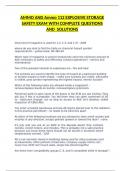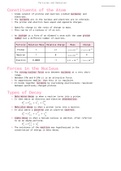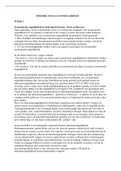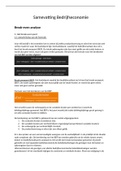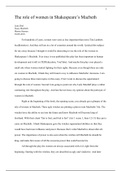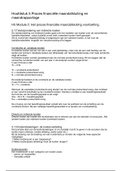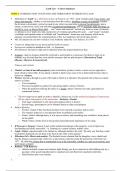THE REVOLUTIONS OF 1848
Subsequent to embracing changes during the 1830s and the mid 1840s, Louis-
Philippe of France dismissed further change and accordingly prodded new liberal
tumult. Craftsman concerns likewise had stimulated, against their deficiency of
status and changes in work conditions following from fast financial change; a
significant downturn in 1846-47 added to well known turmoil. A few communist
thoughts spread among craftsman pioneers, who encouraged a system in which
laborers had some control over their own little firms and work as one and
correspondence. A significant promulgation crusade for more extensive testimonial
and political change got police activity February 1848, which thusly provoked an
exemplary road rising that pursued the government (never to return) and
momentarily settled a conservative system in light of general masculinity
suffrage.Revolt immediately spread to Austria, Prussia, Hungary, Bohemia, and
different pieces of Italy. These risings included the greater part of the fixings
present in France, yet in addition serious worker complaints against manorial
commitments and a solid patriot current that looked for public unification in Italy
and Germany and Hungarian freedom or Slavic independence in the Habsburg
lands. New systems were set up in numerous region, while a public gathering met
in Frankfurt to examine German solidarity.
,The significant uprisings were placed down in 1849. Austrian progressives were
partitioned over patriot issues, with German nonconformists went against to
minority patriotisms; this assisted the Habsburg system with keeping up with
control of its military and move against rebels in Bohemia, Italy, and Hungary (in
the last case, supported by Russian soldiers). Parisian progressives split between
the individuals who looked for just political change and craftsmans who needed
work insurance and different additions from the state. In a horrendous conflict in
June 1848, the craftsmans were put down and the conservative system moved
consistently toward the right, at last choosing a nephew of Napoleon I as president;
he, thusly (consistent with family structure), before long settled another realm,
guaranteeing the title Napoleon III. The Prussian ruler turned down an opportunity
to head a liberal joined Germany and on second thought utilized his military to
pursue the progressive legislatures, supported by divisions among nonconformists
and common extremists (counting the communist Karl Marx, who had set up a
paper in Cologne).
In spite of the loss of the upsets, nonetheless, significant changes came about
because of the 1848 rising. Manorialism was forever annulled all through Germany
and the Habsburg lands, giving laborers new privileges. A vote based system
controlled in France, significantly under the new domain and regardless of
impressive control; widespread masculinity testimonial had been for all time
, introduced. Prussia, again in moderate hands, all things considered laid out a
parliament, in view of a restricted vote, as a signal to liberal assessment. The
Habsburg government introduced an excused regulatory design to supplant limited
property manager rule. Another age of moderates came to the front — Metternich
had been banished by upheaval — who were anxious to think twice about and use
new political powers instead of go against them down the line. At long last, a few
new political flows had been outlined. Communism, however injured by the
disappointment of the unrests, was on Europe's political plan, and some women's
activist tumult had surfaced in France and Germany. The stage was set for fast
political development after 1850, in a cycle that made exacting upheaval
progressively difficult.The years somewhere in the range of 1815 and 1850 had not
seen major discretionary movement with respect to most European powers, Russia
excepted. Weariness after the Napoleonic Wars joined with a longing to involve
discretion as a weapon of inward governmental issues. England kept on growing its
pioneer hold, most quite presenting more straightforward command over its
domain in India. France and Britain, however still careful about one another, joined
in opposing Russian additions in the Middle East. France likewise started to get
new provincial property, quite by attacking Algeria in 1829. Seeds were being
planted for more fast pilgrim extension after mid-century, however the period
Subsequent to embracing changes during the 1830s and the mid 1840s, Louis-
Philippe of France dismissed further change and accordingly prodded new liberal
tumult. Craftsman concerns likewise had stimulated, against their deficiency of
status and changes in work conditions following from fast financial change; a
significant downturn in 1846-47 added to well known turmoil. A few communist
thoughts spread among craftsman pioneers, who encouraged a system in which
laborers had some control over their own little firms and work as one and
correspondence. A significant promulgation crusade for more extensive testimonial
and political change got police activity February 1848, which thusly provoked an
exemplary road rising that pursued the government (never to return) and
momentarily settled a conservative system in light of general masculinity
suffrage.Revolt immediately spread to Austria, Prussia, Hungary, Bohemia, and
different pieces of Italy. These risings included the greater part of the fixings
present in France, yet in addition serious worker complaints against manorial
commitments and a solid patriot current that looked for public unification in Italy
and Germany and Hungarian freedom or Slavic independence in the Habsburg
lands. New systems were set up in numerous region, while a public gathering met
in Frankfurt to examine German solidarity.
,The significant uprisings were placed down in 1849. Austrian progressives were
partitioned over patriot issues, with German nonconformists went against to
minority patriotisms; this assisted the Habsburg system with keeping up with
control of its military and move against rebels in Bohemia, Italy, and Hungary (in
the last case, supported by Russian soldiers). Parisian progressives split between
the individuals who looked for just political change and craftsmans who needed
work insurance and different additions from the state. In a horrendous conflict in
June 1848, the craftsmans were put down and the conservative system moved
consistently toward the right, at last choosing a nephew of Napoleon I as president;
he, thusly (consistent with family structure), before long settled another realm,
guaranteeing the title Napoleon III. The Prussian ruler turned down an opportunity
to head a liberal joined Germany and on second thought utilized his military to
pursue the progressive legislatures, supported by divisions among nonconformists
and common extremists (counting the communist Karl Marx, who had set up a
paper in Cologne).
In spite of the loss of the upsets, nonetheless, significant changes came about
because of the 1848 rising. Manorialism was forever annulled all through Germany
and the Habsburg lands, giving laborers new privileges. A vote based system
controlled in France, significantly under the new domain and regardless of
impressive control; widespread masculinity testimonial had been for all time
, introduced. Prussia, again in moderate hands, all things considered laid out a
parliament, in view of a restricted vote, as a signal to liberal assessment. The
Habsburg government introduced an excused regulatory design to supplant limited
property manager rule. Another age of moderates came to the front — Metternich
had been banished by upheaval — who were anxious to think twice about and use
new political powers instead of go against them down the line. At long last, a few
new political flows had been outlined. Communism, however injured by the
disappointment of the unrests, was on Europe's political plan, and some women's
activist tumult had surfaced in France and Germany. The stage was set for fast
political development after 1850, in a cycle that made exacting upheaval
progressively difficult.The years somewhere in the range of 1815 and 1850 had not
seen major discretionary movement with respect to most European powers, Russia
excepted. Weariness after the Napoleonic Wars joined with a longing to involve
discretion as a weapon of inward governmental issues. England kept on growing its
pioneer hold, most quite presenting more straightforward command over its
domain in India. France and Britain, however still careful about one another, joined
in opposing Russian additions in the Middle East. France likewise started to get
new provincial property, quite by attacking Algeria in 1829. Seeds were being
planted for more fast pilgrim extension after mid-century, however the period


